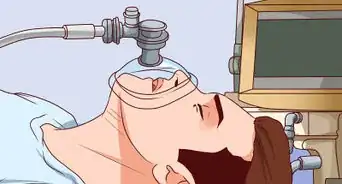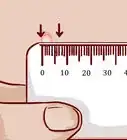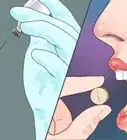This article was medically reviewed by Mark Co, DPM. Dr. Mark Co is a Podiatrist who runs his own private practice in San Francisco, California. Dr. Co specializes in treatments for bunions, ingrown toenails, toenail fungus, warts, plantar fasciitis and other causes of foot pain. He also offers custom orthotics for the treatment and prevention of foot and ankle issues. Dr. Co completed a Master of Business Administration (MBA) at New York University and an MA in Electrical Engineering and Computer Science at Johns Hopkins University. Dr. Co also completed his DPM at the California School of Podiatric Medicine and a residency and internship at the Kaiser Permanente Medical Center, Santa Clara, California. Dr. Co was awarded San Francisco's "Top 3 Podiatrists" in 2018, 2019, and 2020. Dr. Co is also a member of the CPMA (American Podiatric Medical Association).
This article has been viewed 94,859 times.
If left untreated, your ingrown toenail may become infected. Some signs of an infection are throbbing pain, discharge, and an odor. If you determine that your ingrown toenail is infected, then you should visit your doctor. If you catch an ingrown toenail early, you may be able to prevent it from becoming infected by soaking it in warm salt water.[1] In the future, prevent ingrown toenails by trimming your nails correctly, buying properly fitted shoes, and by letting your toes breathe after sports and exercise activities.
Steps
Checking Your Symptoms
-
1Look for an increased redness around your toenail. An early symptom of an ingrown toenail is tender, red skin. However, you will see a marked increase in redness around the area if the toenail progresses to an infection.[2]
-
2Notice if your skin feels hot. You may feel a warm to hot feeling around your toenail if it becomes infected. A throbbing pain may accompany the increase in temperature around your toenail as well. If the infection worsens or is left untreated, you may develop a fever.[3]Advertisement
-
3Watch out for green or yellow pus. Look for pus under the skin near your nail. Pus is a sure sign of an infection. A bad odor may accompany an infected toenail that is secreting pus as well.[4]
- An infected ingrown toenail may look as if red skin is surrounding a light colored area of skin (whitish in color).
-
4Contact your doctor. If you have an infection, then you will need to contact your doctor. Your doctor will be able to diagnose and treat the infection. Treatment depends on severity and can consist of soaking the feet in warm water, antibiotics, or removal of the ingrown toenail if the infection is severe.[5]
- Contact your doctor or podiatrist immediately if you have diabetes or AIDS, suffer from poor blood circulation, are on chemotherapy, or have a weakened immune system.
- Other reasons to see your doctor include persistent or chronic problems with ingrown toenails, if you have diabetes, a compromised immune system, or a condition affecting the nerves or the sensation in your feet, or if you have signs of infection, such as pus, redness, pain, or swelling.[6]
Treating a Non-Infected Ingrown Toenail
-
1Soak your foot in warm water for 10 minutes. Add Epsom salts or a mild soap to the water; this will clean the area. Soaking your toe will relieve pain and reduce redness. It will also soften the nail and skin around the ingrown toenail.[7]
- Make sure the area is thoroughly dry before proceeding to the next step.
-
2Roll a small piece of gauze or cotton between your fingers. Roll it until it forms a wick or a small roll. Then, push the skin growing over your nail down and away from your nail. Place the small cotton roll in between your skin and nail. This will keep your nail elevated, preventing it from growing further into your skin.[8]
- Hold the roll in place by wrapping your toenail in medical gauze.
- This part may be painful but it is necessary. You may take over-the-counter pain relievers like ibuprofen or Tylenol to manage your pain.
- You can apply a topical antibiotic such as Neosporin to further prevent an infection.
-
3Soak your toe two to three times a day. Each time your soak your foot, you will need to change out the cotton roll. Each day, try to wedge the roll a little farther in. Repeat this process until your toenail has grown past the end of your toe. It may take one to two weeks for your nail to grow out.[9]
- If you do not see any improvements or if an infection develops, you may need to contact your doctor.[10]
- You may need to wear sandals until your toe clears up.
Preventing Ingrown Toenails
-
1
-
2Buy properly fitted shoes. Shoes (and socks) that squeeze your toes together may cause your toenail to become ingrown.Make sure you can wiggle your toes in your shoes. If you cannot, either buy new shoes or pick another pair.[13]
- Tight shoes like high heels and pointed-toe shoes may also cause ingrown toenails.
-
3Let your toes breathe. People who exercise frequently or play sports, especially sports where your feet and toes endure trauma like soccer and ballet, are more prone to developing an ingrown toenail. After these activities, take off your shoes and socks and let your toes breathe for one to two hours. Do this by wearing sandals or by walking barefoot afterwards.[14]
- Also, by thoroughly cleaning and drying your toes and feet after strenuous, physical activities, you may be able to reduce your risk of developing an ingrown toenail.
- Using socks made of cotton instead of synthetic material may help your toes and feet breathe better.
Expert Q&A
Did you know you can get expert answers for this article?
Unlock expert answers by supporting wikiHow
-
QuestionCan you treat an infected ingrown toenail at home?
 Mark Co, DPMDr. Mark Co is a Podiatrist who runs his own private practice in San Francisco, California. Dr. Co specializes in treatments for bunions, ingrown toenails, toenail fungus, warts, plantar fasciitis and other causes of foot pain. He also offers custom orthotics for the treatment and prevention of foot and ankle issues. Dr. Co completed a Master of Business Administration (MBA) at New York University and an MA in Electrical Engineering and Computer Science at Johns Hopkins University. Dr. Co also completed his DPM at the California School of Podiatric Medicine and a residency and internship at the Kaiser Permanente Medical Center, Santa Clara, California. Dr. Co was awarded San Francisco's "Top 3 Podiatrists" in 2018, 2019, and 2020. Dr. Co is also a member of the CPMA (American Podiatric Medical Association).
Mark Co, DPMDr. Mark Co is a Podiatrist who runs his own private practice in San Francisco, California. Dr. Co specializes in treatments for bunions, ingrown toenails, toenail fungus, warts, plantar fasciitis and other causes of foot pain. He also offers custom orthotics for the treatment and prevention of foot and ankle issues. Dr. Co completed a Master of Business Administration (MBA) at New York University and an MA in Electrical Engineering and Computer Science at Johns Hopkins University. Dr. Co also completed his DPM at the California School of Podiatric Medicine and a residency and internship at the Kaiser Permanente Medical Center, Santa Clara, California. Dr. Co was awarded San Francisco's "Top 3 Podiatrists" in 2018, 2019, and 2020. Dr. Co is also a member of the CPMA (American Podiatric Medical Association).
Podiatrist
References
- ↑ Mark Co, DPM. Podiatrist. Expert Interview. 21 April 2020.
- ↑ http://patient.info/health/ingrowing-ingrown-toenails
- ↑ http://patient.info/health/ingrowing-ingrown-toenails
- ↑ http://patient.info/health/ingrowing-ingrown-toenails
- ↑ Mark Co, DPM. Podiatrist. Expert Interview. 21 April 2020.
- ↑ http://www.mayoclinic.org/diseases-conditions/ingrown-toenails/symptoms-causes/dxc-20273047
- ↑ http://patient.info/health/ingrowing-ingrown-toenails
- ↑ http://www.emedicinehealth.com/ingrown_toenails/page5_em.htm#what_are_ingrown_toenail_home_remedies
- ↑ http://www.emedicinehealth.com/ingrown_toenails/page5_em.htm#what_are_ingrown_toenail_home_remedies
- ↑ Mark Co, DPM. Podiatrist. Expert Interview. 21 April 2020.
- ↑ Mark Co, DPM. Podiatrist. Expert Interview. 21 April 2020.
- ↑ https://health.clevelandclinic.org/2015/03/how-you-can-prevent-and-treat-painful-ingrown-toenails/
- ↑ http://www.emedicinehealth.com/ingrown_toenails/article_em.htm#what_causes_an_ingrown_toenail
- ↑ https://health.clevelandclinic.org/2015/03/how-you-can-prevent-and-treat-painful-ingrown-toenails/
About This Article
To know if your ingrown toenail is infected, watch for green or yellow pus near your nail. The skin around your toenail may also be red or feel warm or hot if it's infected. If you have these symptoms, visit your doctor for a diagnosis and treatment. However, if your toenail isn’t infected, treat it at home with some simple remedies. Soak your foot in warm water for 10 minutes 2-3 times a day. This will relieve some of the pain and clean the area. After drying off your foot, you can apply a small piece of cotton between your skin and nail to prevent it from growing into your skin further. Hold the cotton in place by wrapping your toenail in medical gauze. To learn how to prevent future ingrown toenails, read more from our Medical co-author.

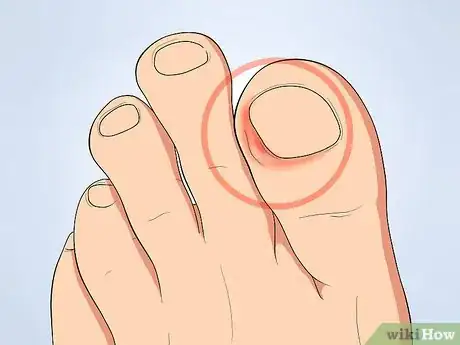
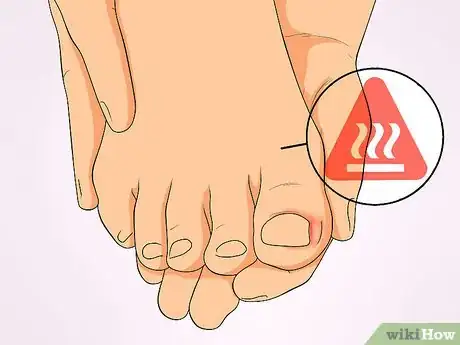
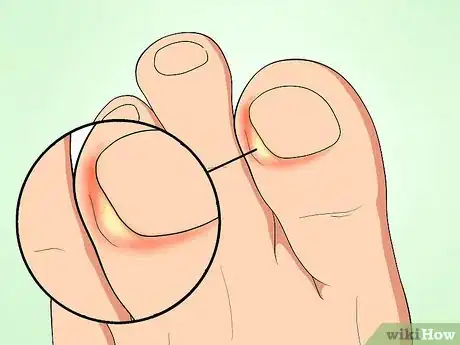
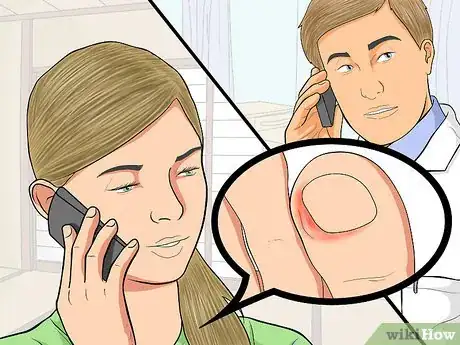

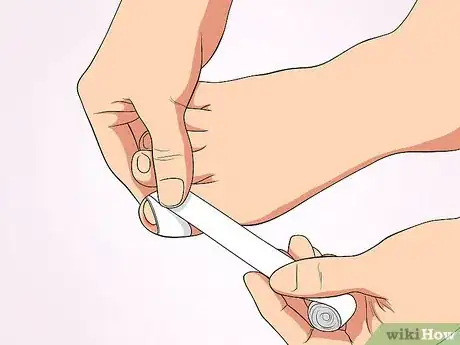
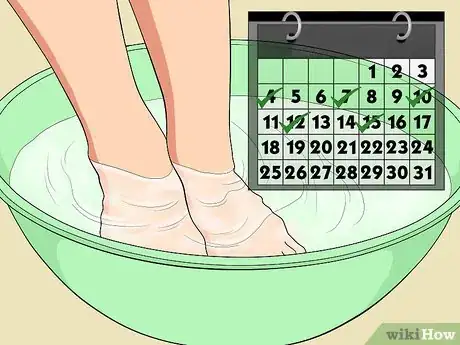

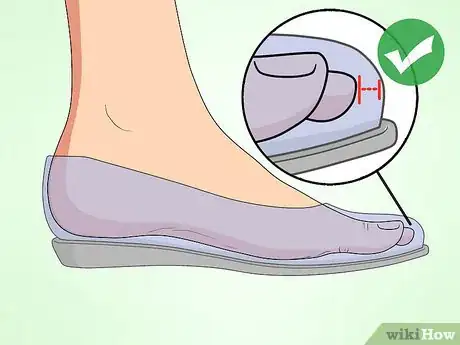
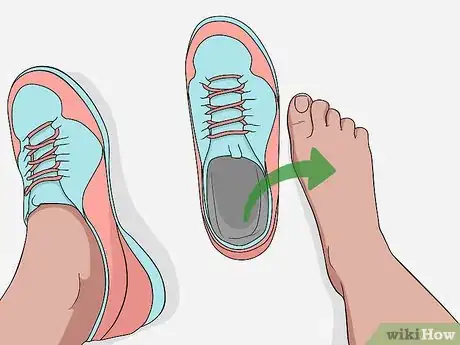
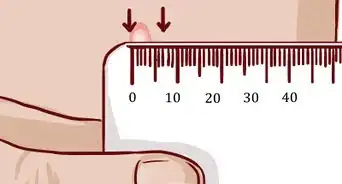



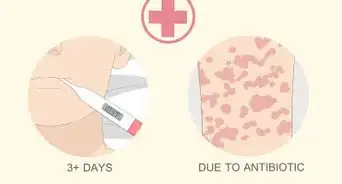





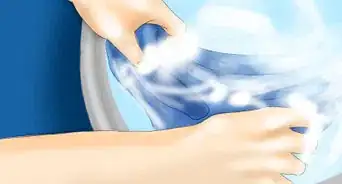
-Step-11.webp)
